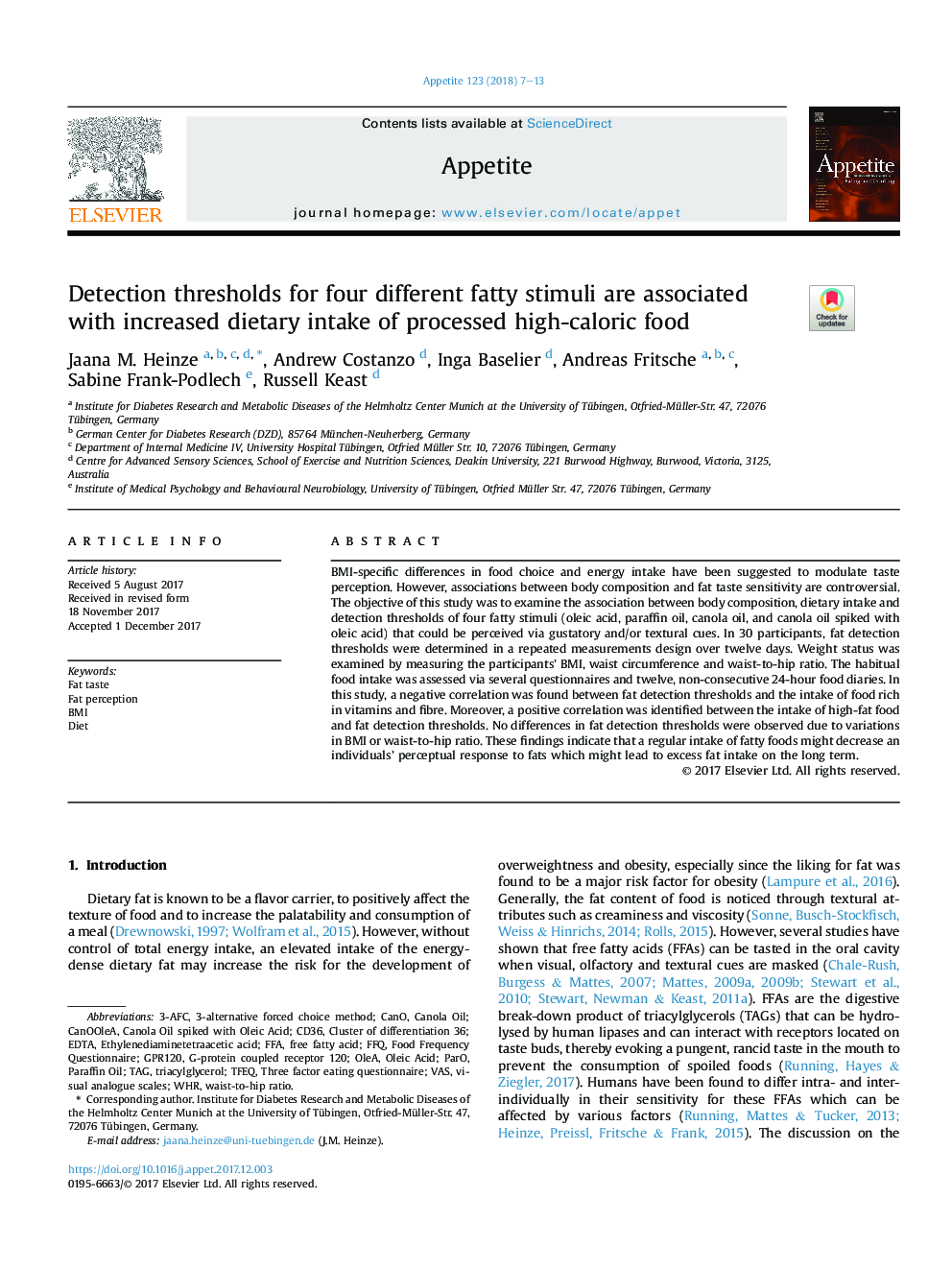| کد مقاله | کد نشریه | سال انتشار | مقاله انگلیسی | نسخه تمام متن |
|---|---|---|---|---|
| 7305970 | 1475357 | 2018 | 7 صفحه PDF | دانلود رایگان |
عنوان انگلیسی مقاله ISI
Detection thresholds for four different fatty stimuli are associated with increased dietary intake of processed high-caloric food
ترجمه فارسی عنوان
آستانه تشخیص برای چهار محرک های مختلف چربی با افزایش مصرف غذای فرآورده های با کالری بالا همراه است
دانلود مقاله + سفارش ترجمه
دانلود مقاله ISI انگلیسی
رایگان برای ایرانیان
کلمات کلیدی
VASThree Factor Eating QuestionnaireG-protein coupled receptor 120TFEQWHRGPR120CD36FFQFFAEDTA - اتیلن دی آمین تترا استیک اسید Ethylenediaminetetraacetic acid - اتیلینیدامین تتراستیک اسیدFat perception - ادراک چربیOleic acid - اسید اولئیکFree fatty acid - اسید چرب آزادOlea - اولاtriacylglycerol - تری آسیل گلیسرول TAG یا triacylglycerols - تری گلیسرید یا تری آسیل گلیسرولParo - توقفcluster of differentiation 36 - خوشه تمایز 36Paraffin oil - روغن پارافینCanola oil - روغن کانولاDiet - رژیم غذاییBMI - شاخص توده بدنیFat taste - طعم چربیVisual analogue scales - مقیاس های آنالوگ ویژوالwaist-to-hip ratio - نسبت دور کمر به رانfood frequency questionnaire - پرسشنامه فرکانس غذاCano - کانو
موضوعات مرتبط
علوم زیستی و بیوفناوری
علوم کشاورزی و بیولوژیک
دانش تغذیه
چکیده انگلیسی
BMI-specific differences in food choice and energy intake have been suggested to modulate taste perception. However, associations between body composition and fat taste sensitivity are controversial. The objective of this study was to examine the association between body composition, dietary intake and detection thresholds of four fatty stimuli (oleic acid, paraffin oil, canola oil, and canola oil spiked with oleic acid) that could be perceived via gustatory and/or textural cues. In 30 participants, fat detection thresholds were determined in a repeated measurements design over twelve days. Weight status was examined by measuring the participants' BMI, waist circumference and waist-to-hip ratio. The habitual food intake was assessed via several questionnaires and twelve, non-consecutive 24-hour food diaries. In this study, a negative correlation was found between fat detection thresholds and the intake of food rich in vitamins and fibre. Moreover, a positive correlation was identified between the intake of high-fat food and fat detection thresholds. No differences in fat detection thresholds were observed due to variations in BMI or waist-to-hip ratio. These findings indicate that a regular intake of fatty foods might decrease an individuals' perceptual response to fats which might lead to excess fat intake on the long term.
ناشر
Database: Elsevier - ScienceDirect (ساینس دایرکت)
Journal: Appetite - Volume 123, 1 April 2018, Pages 7-13
Journal: Appetite - Volume 123, 1 April 2018, Pages 7-13
نویسندگان
Jaana M. Heinze, Andrew Costanzo, Inga Baselier, Andreas Fritsche, Sabine Frank-Podlech, Russell Keast,
